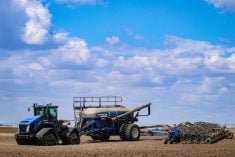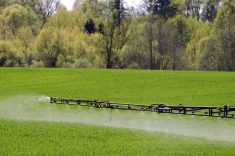Food safety officials in Canada and the U.S. have formally recognized each other’s respective food safety controls under a cross-border co-operation pact.
The two countries last week announced their new food safety systems recognition arrangement, reached during meetings of the Canada-U.S. Regulatory Co-operation Council (RCC) held Wednesday and Thursday in Washington, D.C.
The two countries “intend to better align their food safety regulatory systems, reduce unnecessary duplication, enhance information sharing, and to the extent possible, leverage resources so that the agencies can better meet their public health objectives,” Michael Taylor, the U.S. Food and Drug Administration’s deputy commissioner for foods and veterinary medicine, said in a joint release.
Read Also

U.S. grains: Soy futures set 15-month high after China agrees to purchases
U.S. soybean futures reached a 15-month high on Thursday after President Donald Trump’s administration said top-importer China agreed to buy tens of millions of tons of American crops in the next few years as part of a trade truce.
The arrangement deals with food safety systems other than those for meat, poultry, processed egg products, grade “A” milk, grade “A” milk products, dietary supplements and “natural health” products as well as farmed catfish, related catfish products and raw bivalve mollusks.
The arrangement doesn’t set up any legally binding obligations under domestic or international law, the governments said.
Rather, the text of the pact commits the two countries to work on “more efficient and effective use of resources (and) collaboration on risk-informed decision-making about activities that may be carried out in each country.”
When the two countries face “similar food safety issues and challenges,” the arrangement calls for early discussion of respective policy approaches, which in turn allows the countries to exchange best practices and approaches and to “enhance the likelihood for similar or complementary approaches to be considered, where applicable.”
The pact, the two governments said, will allow the importing country to consider the exporting country’s like level of oversight when prioritizing food inspection tasks.
Importers, under the agreement, will have “greater confidence that a product meets the country’s requirements.”
Imports into Canada must continue to meet Canadian requirements, and imports into the U.S. must continue to meet all applicable U.S. requirements, the two governments said.
If either country’s level of food safety control “significantly changes,” the arrangement allows for the other country to carry out a follow-up systems recognition assessment of the affected standards.
“Canada and the U.S. have confidence in each other’s regulatory systems,” Paul Mayers, the Canadian Food Inspection Agency’s vice-president for policy and programs, said in the same release. “Co-operation between our countries is fundamental to providing and contributing to a safe food supply.”
Other “areas of opportunity” discussed during the RCC meetings include veterinary drugs, plant and animal health, crop protection, meat inspection and certification, energy efficiency standards, automotive/locomotive, consumer health products, medical devices and chemicals management.
The meetings included over 400 regulators and stakeholders from both countries, including more than 70 Canadian business and industry representatives and staff representing over 16 departments and agencies. — AGCanada.com Network












